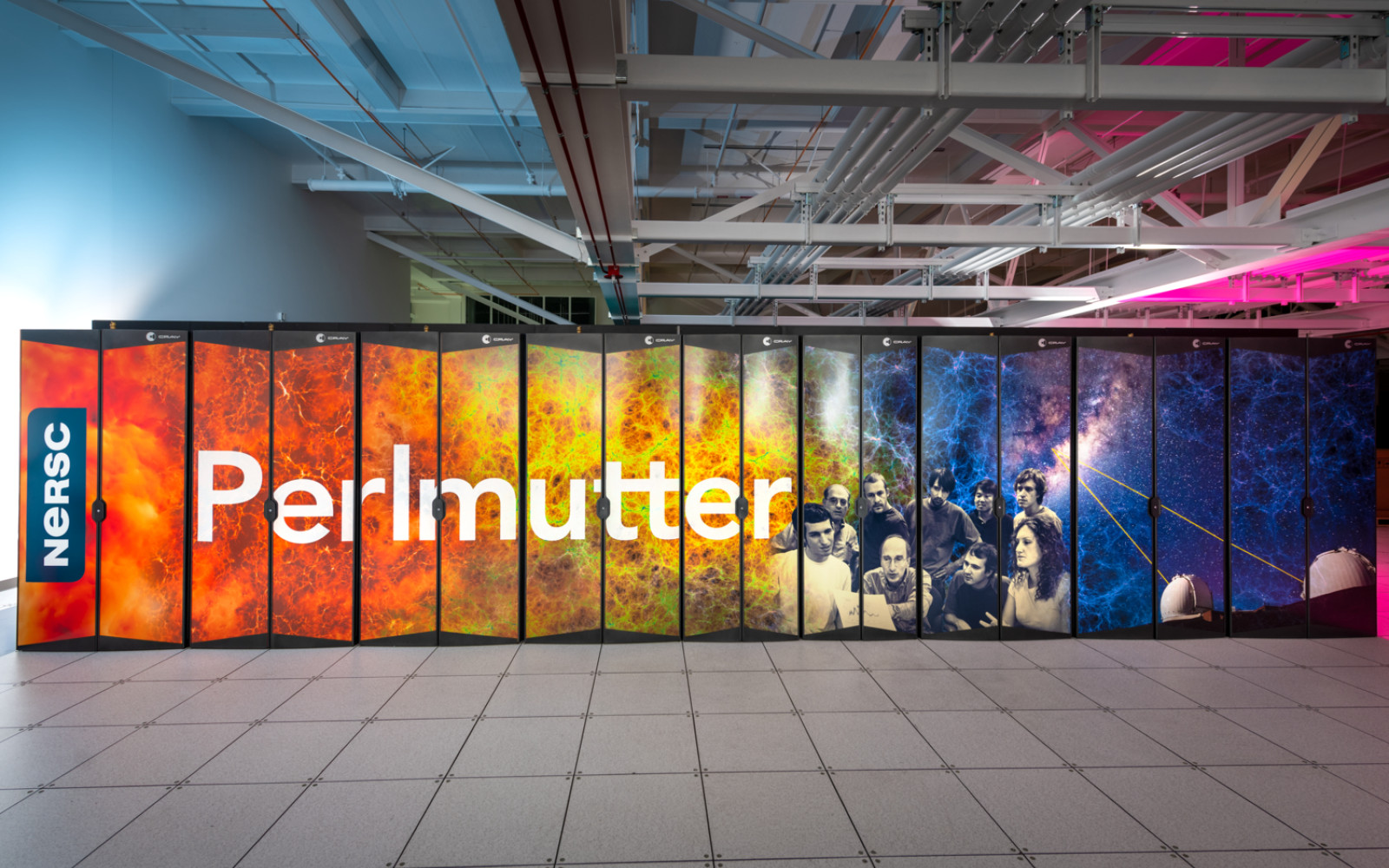Perlmutter System

The mural on the system’s first row of cabinets pays tribute to its namesake, Saul Perlmutter, who is depicted with members of his team (center). The telescopes involved in the sky survey on which his work was based are on the right, and colorful simulations used in the search for dark energy and dark matter form the background. - Credit: Thor Swift, Berkeley Lab
Perlmutter is NERSC’s flagship system, housed in the center’s facility in Shyh Wang Hall at Berkeley Lab.
The system is named in honor of Saul Perlmutter, an astrophysicist at Berkeley Lab who shared the 2011 Nobel Prize in Physics for the discovery that the expansion of the Universe is accelerating. Efforts to explain this acceleration revealed a universe dominated by enigmatic dark energy, the study of which is also supported by the Perlmutter system. A NERSC user for many years, Saul Perlmutter carried out part of his Nobel Prize-winning work on NERSC systems.
Built for science
Perlmutter is designed to meet the scientific community’s emerging requirements for simulation, data analytics, and artificial intelligence.
The system derives performance from advances in hardware and software.
A new Cray system interconnect for data-centric computing improves system utilization, performance, and scalability of supercomputing and AI applications and workflows.
The system also features NVIDIA A100 GPUs with Tensor Core technology and direct liquid cooling.
Perlmutter is also NERSC’s first supercomputer with an all-flash scratch filesystem. The 35-petabyte Lustre filesystem can move data at a rate of more than 5 terabytes/sec, making it the fastest storage system of its kind.
Who uses the system?
Like all NERSC systems, Perlmutter is dedicated to the mission of the U.S. Department of Energy Office of Science, which awards most of its resources to scientists based on a competitive proposal process. That amounts to more than 11,000 scientists from over 800 institutions working in physics, chemistry, materials, and energy technologies.
However, NERSC also awards a portion of the system’s time directly. The Director’s Reserve is set aside for startup and educational projects, and research of unusual significance or urgency, all of which must support the DOE Office of Science mission.